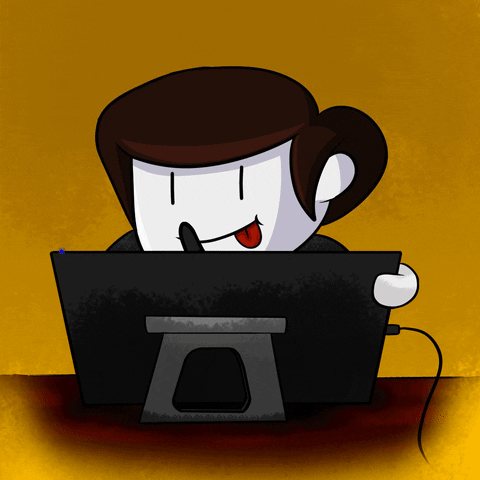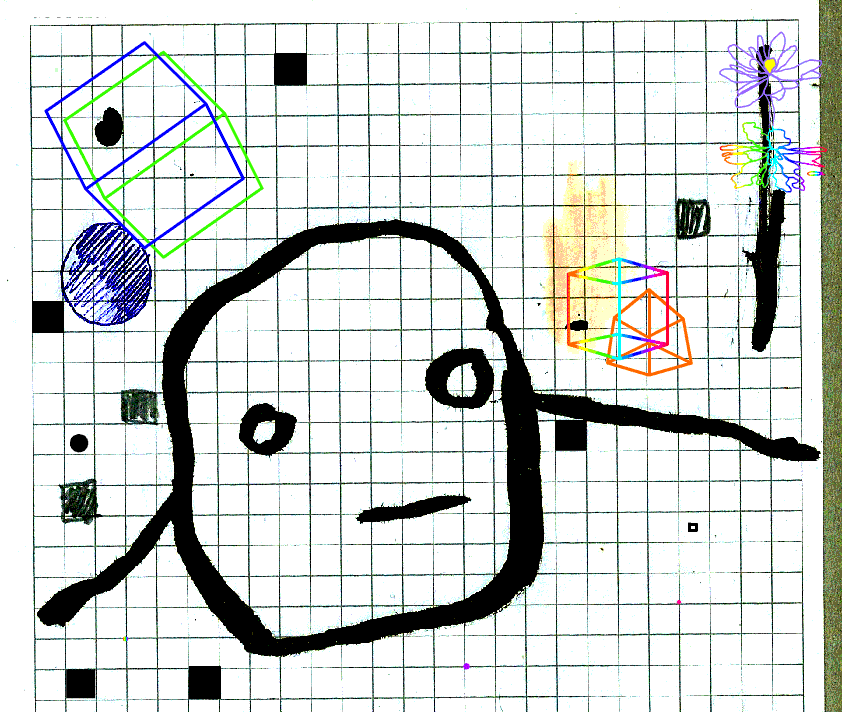2D animation, often known as Traditional Animation, is the process of animating still images using computer software or traditional arts in a two-dimensional space. It allows you to play with the height and width of characters and backgrounds to artificially create depth.
The traditional aspect refers to the hand-written drawings where frames are drawn on paper and the animation is created subsequently, by hand. These days, however, computers make the process both simpler and quicker and allow much more than what you’d usually do by hand.
A 2D animation pipeline is an ordered set of tasks that people undertake using their skills as 2D animators and appropriate animation software to complete an animated film for an animation client.
In this article, we’re going to go through the 2D Animation pipeline through the 3 stages of pre-production, production, and post-production.
The 2D animation pipeline is a simple linear progression and the steps in the process need to be done in order. There is, however, no definitive guide for a production pipeline and every studio and freelancer handles every process in their own way.
Treat this as a guide for you to be able to figure out how to work through the process yourself.
Pre-Production Stage For the 2D Animation Pipeline
1. Scripting and Screenplay
Developing and writing down a script for the project is the first and arguably the most important step of any and all projects and should be your first important step in the 2D animation pipeline.
Sometimes you may receive a brief with a script already, but often as a freelance animator, you might have to write the script yourself.
In animation, the script will focus more on the visual direction, as opposed to the dialogue.
2. Storyboarding
Image by Oleksandr Todorov via Unsplash
The storyboard is a graphic representation of the course of direction of the animation. It will give a solid visualization of the animation and allow you or the director of the project to assess the script before it goes through the 2D animation pipeline.
The storyboard looks like a sketch that organizes the story and resembles a comic strip. It is often presented to the client for approval before the production phase can begin.
The storyboard and script will often be shown to the client to ensure that they’re happy with what the 2D animation pipeline will yield in the end.
3. Conceptualization
The conceptualization phase is arguably the second most important part of the 2D animation pipeline as it will determine much of what happens during the production phase.
During each part of the conceptualization phase, you will usually present the work done to the client for approval so as to make sure the process is moving in the best possible direction. You need to make sure the client is happy with everything before moving on to the production phase.
4. Character and Asset Design
Image via Concept Art Empire
This process includes creating model sheets for not just the characters, but for the backgrounds, props, and any other type of visual effect to be used.
Your assets are necessary for your animation because without them there won’t be much to animate! This makes them extremely important. Showing your client the 2D assets is necessary to ensure they’re happy with the concepts discussed and that it matches their vision.
5. Animatic or Leica Reel
The animatic process is the sequencing of shots, images, or sketches that allows a glimpse into the timing of the final animation. The animatic itself is a video and can be considered the precursor to the final product and is an incredibly important step in the planning stage of the 2D animation pipeline.

GIF by Familygoogs via GIPHY
Production Stage for 2D Animation
6. Asset Production
Following the designs from the pre-production phase of the pipeline, digital animation artists will work during the process to create the digital assets. Sometimes artists will even outsource their character designing to character design animation studios.
At this point in the production pipeline, the assets are fully fleshed out and the animator can get started on working through the next stage of the production pipeline.
Assets include characters, backgrounds, and props, amongst other things that are necessary for transforming the storyboard into the animation.
Layouts include all the information necessary for the scene(s) such as background, overlay and underlay, and the key poses. Layouts and posing are incredibly important as they link the storyboard and the animation.
The backgrounds are sections or angles of the location and are done for each scene. Sometimes artists will have physical pictures as references for the locations and backgrounds, but other times will simply use their imaginations.
 | Looking to Elevate Your Business Skills as an Animator? |
Unlock your potential with our FREE Masterclass Our free masterclass is the perfect opportunity to do just that. You'll learn what you need to take your animation business to the next level. | |
7. Audio Substitution
Image by Yan Krukov via Pexels
The audio part of the process will require voice actors to read from scripts derived in the early scripting stage of the process.
The dialogue and audio will get recorded often outside of the animation studio, or outside your home studio. If there is dialogue, then the final version needs to be recorded in time to be imported into the project before the animation.
This is necessary for the animator to be able to animate the mouths and expressions of the characters and do an accurate sound breakdown. In order for this to work, a detailed timeline needs to be drawn up so that the entire process works smoothly.
8. Hand-drawn and Digital Animation

GIF by Maximiliano Alejandro Zas via GIPHY
It feels strange to say out loud, but animation requires animators.
Many studios operate by splitting animators up into groups of those who will work specifically on the character they’ve designed, as well as the scenes that the character appears in, and those who work on all the in-between frames for each scene.
Both animators are incredibly important, but in-betweeners bring a character to life. Remember, living characters need to do living things like blink and breathe!
In order to see whether or not the animations are going in the right direction, animators will consistently send the animations through a line-test process, which tests the key poses of the animation.
Line-tests are not dissimilar to an animatic in purpose but are simply in different stages of the 2D animation pipeline. Line-tests help with timing and help animators see if their animations are lining up correctly before they get to the coloring stage.
While an animatic is a sort of slideshow of storyboard images for planning, a line-test is a continuous process that helps a 2D animator edge closer to the final coloring stages of the animation.
Traditional animation is still often done on paper. An animator will draw each individual frame of the animation or each character pose. If there is a dialogue of any kind, then the animator needs to incorporate mouth movements and expressions.
2D Animators need to remember to keep it simple. Overly animated scenes become difficult to engage with!
Once finished, the animation is sent to the digital part of the 2D animation pipeline, but this only applies to modern pipelines. Traditionally, animations were sent to be hand-painted.
The digital aspect of animation is simply utilizing the incredible technology we have available to help simplify the process, but using paper is still more often than not a part of the process.
9. Special Effects
Gif by Ghost Satellite via GIPHY
The process of creating special effects involves creating or manipulating the elements of a scene that doesn’t include characters and backgrounds.
Using computer software, special effects animators will usually enhance a scene by adding, removing, or enhancing objects that will interact with the scene to create more depth and realism.
Sometimes, instead of drawing or rendering special effects, studios will go through special processes to produce special effects. Disney, for example, used to film rain against a black background and superimpose it over the animation.
Post-Production Stage For 2D Animation

GIF by Rocket Jump Film School via GIPHY
10. Ink and Paint
The current stage of digital ink and paint is still mainly traditional until after the animation is completed. The animations are then scanned into a computer and the software packages then color and process the drawings.
Sometimes animators will utilize computer software to assist with this process instead of hand-painting the drawings.
This stage of the 2D animation pipeline may take the longest, as it requires all the drawings to be cleaned, the lines to be inked, and the filling to be done for all the drawings. This obviously depends on the complexity of the drawings.
Animation clients may require several revisions during this stage if they feel like the coloring just isn’t working for them, which is another reason this part of the process may take the longest.
2D animators must remember to not feel disheartened if this part of the 2D animation pipeline takes a long time, as the work is for someone else after all.
Once the process is complete, the client is generally shown the final product in the 2D animation pipeline and at last, the project can make its way to the rendering stage.
11. Composting and Rendering
GIF by Matthew Butler via Giphy
Composting refers to the process of importing the colored background, the animation, and the sound following the original reference.
With all the elements together the animator creates the camera movements and motions and adds any digital effects required for each scene. This often includes shadows, tones, and highlightings.
Composting is combining all the visual elements from all sources into a single image, assisting with creating an illusion that all the parts are a part of the same scene.
Once composting is complete, the animation is fully rendered. The 2D animation pipeline is almost at its end.
12. Final Edits
While most times the process is almost complete by the time the rendering process finishes, sometimes final edits and revisions will be necessary. These edits will include sound effects and recordings that will make it into the final product.
13. Export
This will determine the final format of the video, as you render the final product as a movie or image sequence. Rendering out the master and distributing it will very often be done by external companies, but as a freelancer, it may very well fall to you to work in this step as well.
The 2D Animation Pipeline In A Nutshell
2D animation is still widely considered to be a reputable form of animation, and will most likely continue to be relevant for many years to come.
Not only are animators required to transform otherwise stationary characters into living entities, but are expected to be consistent and provide a great quality of work at all times.
Production pipelines are incredibly important to ensure that the process as a whole runs smoothly and efficiently, as well as affordably. Many parts of the process need to be done in order and having a production pipeline will help with that.
In some projects, an animator can be shuffled around and be expected to be involved in any or all stages of the process. Most animators may find themselves skilled in certain aspects of the process and can and more often than not do find themselves more specific work in those areas.
If you’d like more info on the 2D animation process or would like to learn more about other types of animation, be sure to check out our free masterclass and download a copy of our free marketing handbook.


